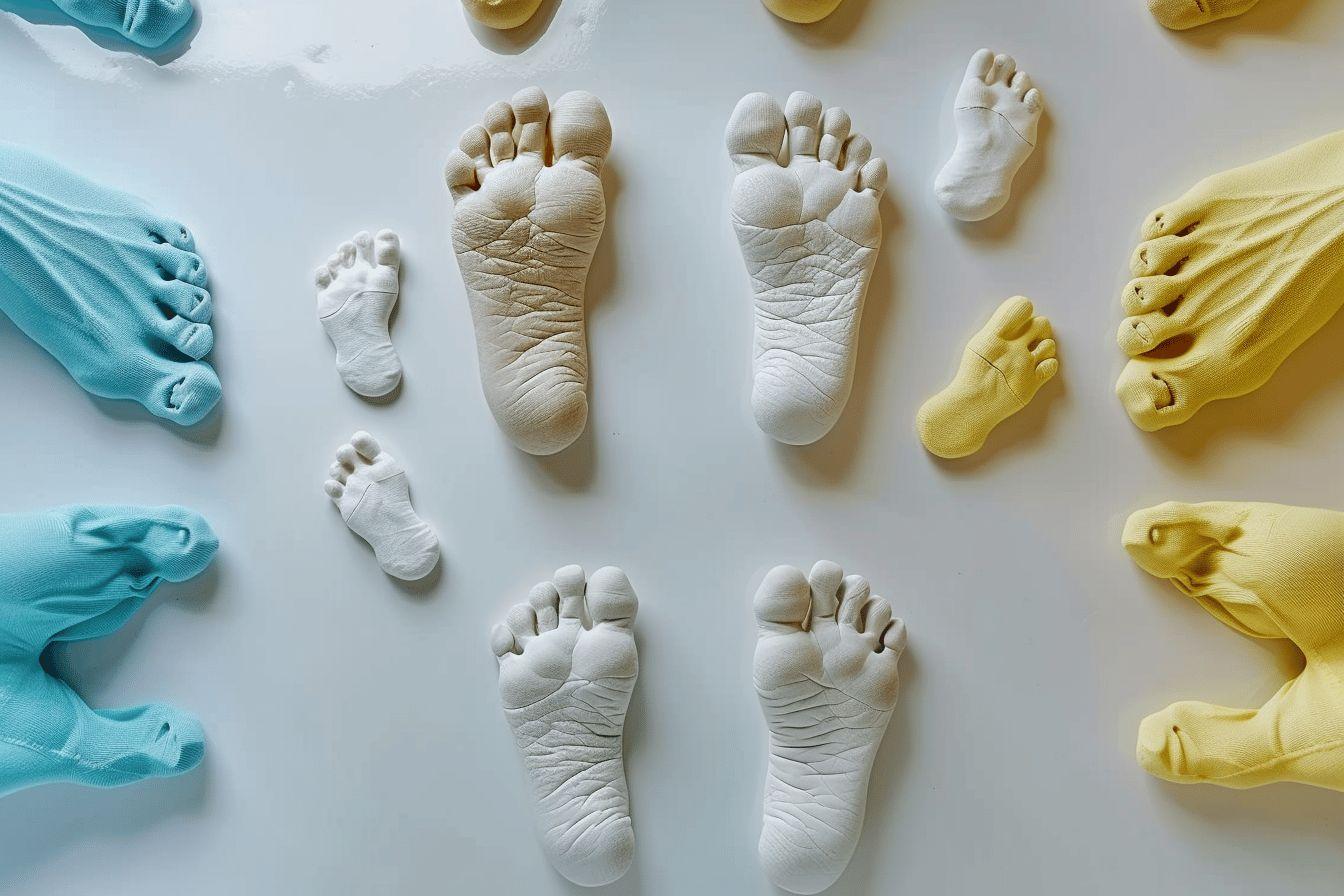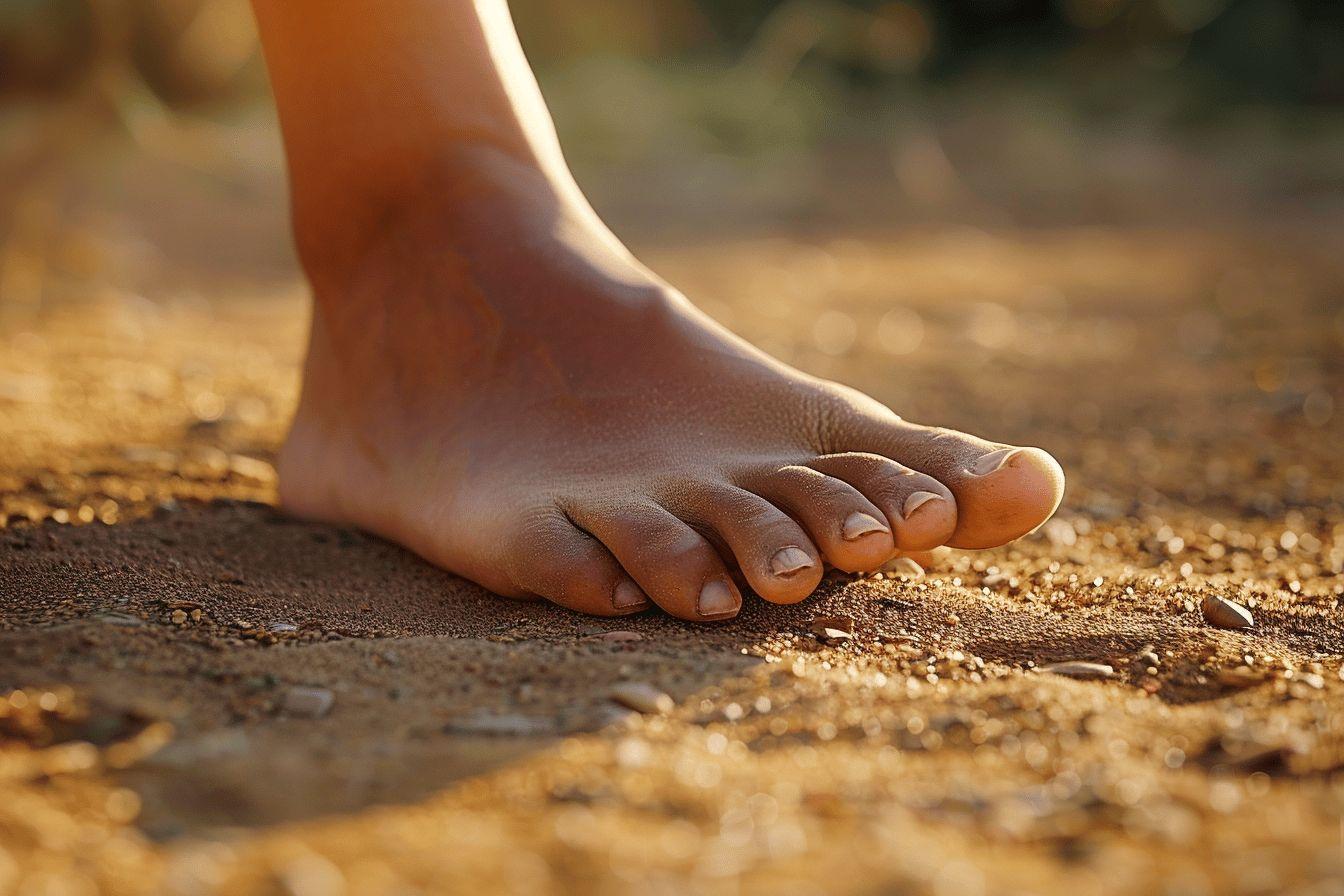Summary
Your feet's structure reveals crucial insights about your health and mobility patterns, affecting your entire body.
- Foot shapes (Egyptian, Roman, Greek, Germanic, Celtic) are primarily genetic but influence walking and running mechanics
- Your arch type significantly impacts biomechanics, with high arches, normal arches, and flat feet each presenting unique challenges
- Walking patterns (neutral, overpronation, supination) directly reflect your foot structure and can affect alignment throughout your body
- Proper footwear selection and targeted exercises can address most foot-related issues before they become problematic
Your feet are remarkable structures that support your entire body weight. They contain 26 bones, 33 joints, and over 100 muscles, tendons, and ligaments—all working together to keep you mobile. Beyond their functional importance, the shape of your feet can reveal surprising insights about your health, genetics, and potential movement patterns. Understanding your unique foot type isn't just fascinating—it's essential for choosing proper footwear, preventing injuries, and addressing mobility issues.
Understanding the main feet shapes and what they mean
Human feet display remarkable diversity in their structure and appearance. Each foot shape has distinct characteristics that influence how you walk, run, and balance. Identifying your foot type can provide valuable information about your biomechanics and potential health concerns.
The five most common foot shapes are:
- Egyptian foot (Tapered): The big toe is longest, with each subsequent toe decreasing in length
- Roman foot (Square): The first three toes are of similar length, creating a squared appearance
- Greek foot (Morton's toe): The second toe is longer than the big toe
- Germanic foot (Peasant foot): All toes are nearly the same length
- Celtic foot (Combination): Features elements of both Egyptian and Greek types
Each foot shape has its unique advantages and challenges. For example, those with Egyptian feet often excel in activities requiring forward propulsion like running, while Greek feet may provide better stability for activities demanding balance. The Roman foot, with its squared profile, typically offers a balanced combination of stability and forward momentum.
Your foot shape is primarily determined by genetics, but environmental factors and lifestyle choices can influence how your feet develop over time. Wearing improper footwear during formative years or engaging in specific activities can gradually alter the natural shape of your feet.
Understanding your foot shape can help you select appropriate footwear. Egyptian feet typically benefit from shoes with a tapered toe box, while Greek feet require additional room in the toe box to accommodate the longer second toe. Those suffering from plantar fasciitis may need specialized footwear that addresses their specific foot shape to support recovery.

How foot arches affect your mobility and health
Beyond the overall shape of your feet, the height of your foot arch significantly impacts your biomechanics and can influence your susceptibility to certain conditions. The arch acts as a natural shock absorber, distributing impact forces when your foot strikes the ground.
There are three primary arch types:
| Arch Type | Characteristics | Potential Issues |
|---|---|---|
| High Arch (Cavus Foot) | Pronounced curve with minimal ground contact | Increased pressure on heel and ball of foot, reduced shock absorption |
| Normal Arch (Neutral) | Moderate curve with balanced weight distribution | Fewer biomechanical issues |
| Flat Feet (Fallen Arch) | Little to no visible arch, most of foot contacts ground | Overpronation, potential alignment issues in ankles, knees, and hips |
High arches can create excessive strain on the outer edges of your feet, potentially leading to stability issues and conditions like plantar fasciitis. The reduced contact area with the ground means less surface for shock absorption, which can increase impact forces traveling up your legs.
Conversely, flat feet tend to overpronate (roll inward) during walking or running. This inward rolling can affect alignment throughout your kinetic chain, potentially contributing to ankle, knee, and hip problems over time. Many people with flat feet benefit from alternative therapies like reflexology alongside proper footwear with arch support.
The good news is that regardless of your arch type, appropriate footwear and strengthening exercises can often address potential issues before they become problematic. Custom orthotics or arch supports can help distribute pressure more evenly across your feet, while targeted exercises can strengthen the muscles supporting your arch.
What your walking pattern reveals about your feet shape
The way you walk—your gait pattern—is intimately connected to your foot shape and structure. Observing your footprint and walking style can provide valuable insights into your biomechanics and potential areas of concern.
You can perform a simple wet test at home: Wet your feet, step onto a piece of paper or cardboard, and examine the footprint you leave behind. A complete footprint with little curve indicates flat feet, while a print showing only the heel, outer edge, and ball of the foot suggests high arches.
Your gait pattern typically falls into one of three categories:
- Neutral gait: Weight distributes evenly across the foot with minimal rolling inward or outward
- Overpronation: Foot rolls excessively inward, common with flat feet
- Supination: Foot rolls outward, often seen with high arches
These walking patterns can affect your entire body. Overpronation might contribute to shin splints, knee pain, and lower back issues over time. Supination can increase your risk of ankle sprains and outer knee discomfort. Your natural walking pattern develops as a compensation mechanism for your unique foot structure, but improper compensation can lead to alignment problems throughout your body.
Modern technology has made gait analysis more accessible. Many specialty running stores offer free gait assessments using treadmills and cameras. Physical therapists and podiatrists can provide more comprehensive evaluations to identify subtle movement patterns that might be contributing to discomfort or reduced performance.
Understanding your foot shape and gait pattern empowers you to make informed choices about footwear, exercise, and potential interventions to optimize your movement and reduce injury risk. Remember that our feet change throughout our lives, so periodic reassessment can help address evolving needs.
Taking care of your unique feet shape
Now that you understand your foot shape and its implications, developing a personalized foot care routine becomes essential for maintaining optimal mobility and preventing problems. Regardless of your foot type, certain universal practices benefit everyone.
Regular stretching and strengthening exercises can address imbalances associated with your specific foot shape. For those with high arches, calf stretches and toe curls can help improve flexibility. People with flat feet often benefit from arch-strengthening exercises like towel scrunches and heel raises.
Proper footwear selection is perhaps the most important consideration. Choose shoes designed for your foot shape and intended activity. Remember that shoes wear differently based on your gait pattern, so check regularly for uneven wear patterns that might indicate biomechanical issues requiring attention.
Maintaining healthy body weight reduces pressure on your feet, with each pound of body weight creating several pounds of force on your feet when walking or running. For those with foot-related discomfort, weight management can be an effective part of a comprehensive approach to foot health.
Finally, listen to your feet. Pain is never normal and usually indicates a problem requiring attention. Minor discomfort addressed early often prevents major issues later. If you experience persistent foot pain, consulting with a podiatrist who specializes in biomechanics can provide targeted solutions for your unique feet.




Leave a comment
This site is protected by hCaptcha and the hCaptcha Privacy Policy and Terms of Service apply.